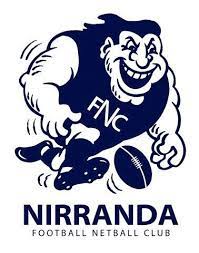In the last 12 months we have had a number of farms where maiden heifers – at the point of calving or in the weeks soon after calving – spontaneously fracture the humerus in a front leg. This is distressing for everyone as there is nothing that can be done and the heifers need to be euthanased.
But what is behind these fractures? Well, it is a slightly convoluted story…
First: let’s talk about copper
Copper is an essential trace mineral. In the body, it plays a vital role in many things: energy metabolism, the immune system, red blood cell maturation, iron metabolism, connective tissue development, bone development, and skin and hair pigmentation.
What causes a deficiency and what does a deficiency mean for an animal?
Copper deficiency mainly occurs in young grazing livestock. Primary deficiency is due to an inadequate amount of copper in the diet (<10mg/kg DM). High levels of dietary molybdenum, sulphur, iron and zinc lead to a secondary deficiency because their interaction with copper interferes with absorption. This is the more common form of deficiency in Australia
Clinical signs of copper deficiency include decreased weight gain, decreased immune function, a rough/light hair coat, anemia, delayed puberty/impaired ovulation… and spontaneous bone fractures.

The photos above show a fractured humerus from a heifer. Unfortunately they are not able to be fixed and the animal has to be euthanased
What are the risk factors for copper deficiency?
Diets that will contain LOWER amounts of copper include:
- Grasses (vs legumes)
- Mature pasture (vs young pastures)
- Spring pasture (vs summer). This is due to higher levels of sulphur, molybdenum in the pasture and increased intake of soil when animals are grazing
- Application of molybdenum fertiliser
- Alkaline soils (have a higher molybdenum availability than acidic soils)
- High iron levels in drinking water or feed
The longer these risk factors are present, the lower the body’s copper levels will go.
How does copper deficiency relate to broken bones?
This condition is thought to have two components:
- Firstly, the bone development is impaired as copper is involved in crosslinking of collagen. This impairment is most likely to occur in the period when heifers are growing rapidly between weaning and mating
- Secondly, when the heifer’s body starts preparing for calving and making milk, calcium mobilization from the bone leaves it weak and prone to fracture. A 10% change in bone density = a 70% change in strength!
How do I know if my heifers at risk of deficiency – do I need to do a test?
Because excess copper levels can cause a toxicity, establishing your farm’s baseline is important. Determining the scale of deficiency also helps us decide which is the best means of supplementation for your farm.
Liver biopsies are the most reliable way to assess the copper stores in the body. It is a relatively quick process, where liver samples are taken from a small group of animals and sent off for testing. Bloods can be harder to interpret.
When should I test liver copper levels?
There are two key times were testing will be useful:
- Monitor levels prior to the risk period (so at the start of winter). This will help identify whether a deficiency is likely to occur, and preventative treatments can be undertaken
- Monitor levels at the end of risk period (so at the end of Spring/start of Summer). This will see if deficiency has already occurred. Short term treatment can be undertaken, and plans made for the following year to prevent it from happening again.
How can I treat copper deficiency?
There are a few options:
- Daily feeding of grain/pellets which contain trace elements. This will also increase the energy and other trace mineral content of the heifers’ diet
- Copper rumen bullets. These reliably increase levels for 6 months (and may last up to 12 months). They should be administered in early winter to provide peak levels over spring.
- Copper injection. These are less reliable, and may increase copper levels for up to 8 weeks. Two to three injections can be given over winter-spring, but we need more evidence to be sure that this option will be adequate on farms with severe deficiency
If you have had heifers with fractured legs or have any questions about copper deficiency please give the clinic a call






























